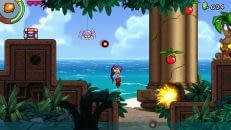Indie Marketing 101: The Right (And Wrong) Ways To Market Your Indie Game
This is not about making money. Marketing is often thought of only in terms of financial gain; while of course this is a common cause it is not the only one. Not by a long shot. Many indie game developers are happy with just having people play their games, so having more people know about and playing their games is surely a good reason to try out marketing. Though, being on the receiving end of many marketing attempts, we can say quite assuredly that there is a need for some guidelines.
When should you send a press release? What components make up a good website? Should you even have a website? How do you make your gameplay trailer go viral? You’ve sent two emails about your game already, is sending another going to push the press too far?
GROUND RULES
Before we get on to the more detailed stuff, let’s lay some ground rules for indie game marketing:
1. “If at first you don’t succeed – try again.” A simple and overused term, but one that needs to be established from the very start. Never give up and always use your creativity upon retries.
2. Unfortunately, there’s no “silver bullet” when it comes to marketing, so though we and others may attempt to point at things with a follow-up shake or nod of the head, it really does vary between each and every case.
3. Do not rely on anyone but yourself to promote your game. Becoming dependent on someone or something is bad news – you’ll limit yourself, get stressed when they don’t do their bit, and you’re likely to become lazy.
FIRST STEPS
We live in the digital age so it’s extremely likely that you’ll be marketing your game online and distributing it digitally. As such, there are some essential first steps to be made if you want to even be considered to exist on this huge internet landscape.
Step 1: Website
Make a website for your game. Need we say more? Well yes, actually, and we will on page two. For now, just be aware that having a website either for yourself as a developer or studio, or a dedicated one especially for your game is priority number one. No one will find out about your game without a website, they’ll have nowhere to go to find more information and they won’t be able to contact you. Capiche?
Step 2: Blog
You’ve already got a website, what do you want a blog for? While your website can remain quite static, you’ll want to show signs of activity – you have no idea how reassuring it is to find a game via a website and then to see that the developer is actually active. Your development blog (we’ll call it for now) can be a part of your main website, but make sure it’s easy to find on the front page via a link, or just by giving the blog entries a dedicated space where visitors can see it. An active Twitter feed on the front page does the same job, albeit it doesn’t replace the effectiveness of a detailed blog.
Step 3: Game Trailer
Now we’re getting somewhere, while your blog may provide development updates perhaps even with screenshots, game trailers in this day and age are SO important. Vimeo and YouTube are the most popular places to upload a game trailer, so use them and even provide a download link so other people can upload your trailer elsewhere. The more it gets around the better.
Step 4: Prototypes
These won’t appeal to everyone but what they will do is start to garner interest in your game. Of course you don’t want to people to see your game when it’s so unfinished but this is no time to be bashful. Not only will the sharing of prototypes help people understand your game and the direction it’s going, they may also give valuable feedback by suggesting tweaks or pointing out flaws, or even offering a more direct helping hand as a developer themselves. You never know what opportunities will open up.
Step 5: Alphas/Betas
Releasing alpha and beta builds of your game pretty much serve the same purpose as showcasing prototypes. You can gain a lot of feedback and even start building a community around your game in these stages. Offering closed or open playtesting via alphafunding are a couple of your options – either way, you’re going to need to share your creation with as many people as possible to reap the most benefits.
Step 6: Free Demo
By this time you should have some polish in certain parts of your game, enough to give people an impression of the final version. Sounds scary as there’s so much pressure riding on this, but without a demo for people to play, they likely won’t show an interest in your game. After all, games are supposed to be played so it’s near impossible to judge a game without doing so.
Page 1: First Steps






